General Impressions of Cambodia
So, the third stop in my SE Asia travels was Cambodia. At first sight, Cambodia was much less developed than Vietnam – the streets were visibly less clean and even the coach we took across the border was noticeably different to the Vietnamese buses (it wasn’t even a sleeper bus). It was also interesting having to think in two currencies – the Cambodian Real and the US Dollar. We were only in Cambodia for such a short time in comparison to Vietnam (5 days), but we did manage to see all the main tourist sites. Many people describe Cambodia as having a cloud of sadness overhanging it due to its genocidal history. Nevertheless, I wouldn’t say that the people are sad but they are definitely upfront about the Khmer Rouge regime which did affect every aspect of life.
A short Cambodian history lesson
A bit of background first – the Khmer Rouge took over the country on the 17th April 1975. The regime called themselves the Kampuchea Communist Party or Angkar. They banned commerce, schools, religion and money in order to implement their communist ideology. They also forced people to move out of the big cities. There was a lot of forced child labour – either as workers or soldiers – and instead of being educated, they were indoctrinated to support Angkar, and usually separated from their parents.
Over the Khmer Rouge’s ruling period (only 3 years, 8 months and 20 days) about a 1/4 of the population (3 million people) died – some people were executed, some died from being overworked or fatal illness, and some died from starvation. There was no real reaction against the regime from the outside world until years later, meaning that some of the key perpetrators, for example, Duch, were not found guilty of crimes against humanity until 2010.
Phnom Penh
The Tuol Sleng Genocide Museum
After arriving and checking into our hostel in Phnom Penh, we had brunch and then walked to the S-21 (Security 21) Prison, also known as the Tuol Sleng Genocide Museum. S-21 used to be a school but was converted into a prison by the Khmer Rouge regime. It was used to imprison people who were thought to have acted against the regime, alongside their families. Prisoners were tortured, often to get them to confess to crimes that they probably hadn’t committed. Rules were strict and punishment was brutal. Visiting the museum was a chilling experience which depicted the cultural and human genocide carried under the Khner Rouge in Cambodia. I was shocked to hear that only 7 people survived out of 20,000 people who were housed in the prison.
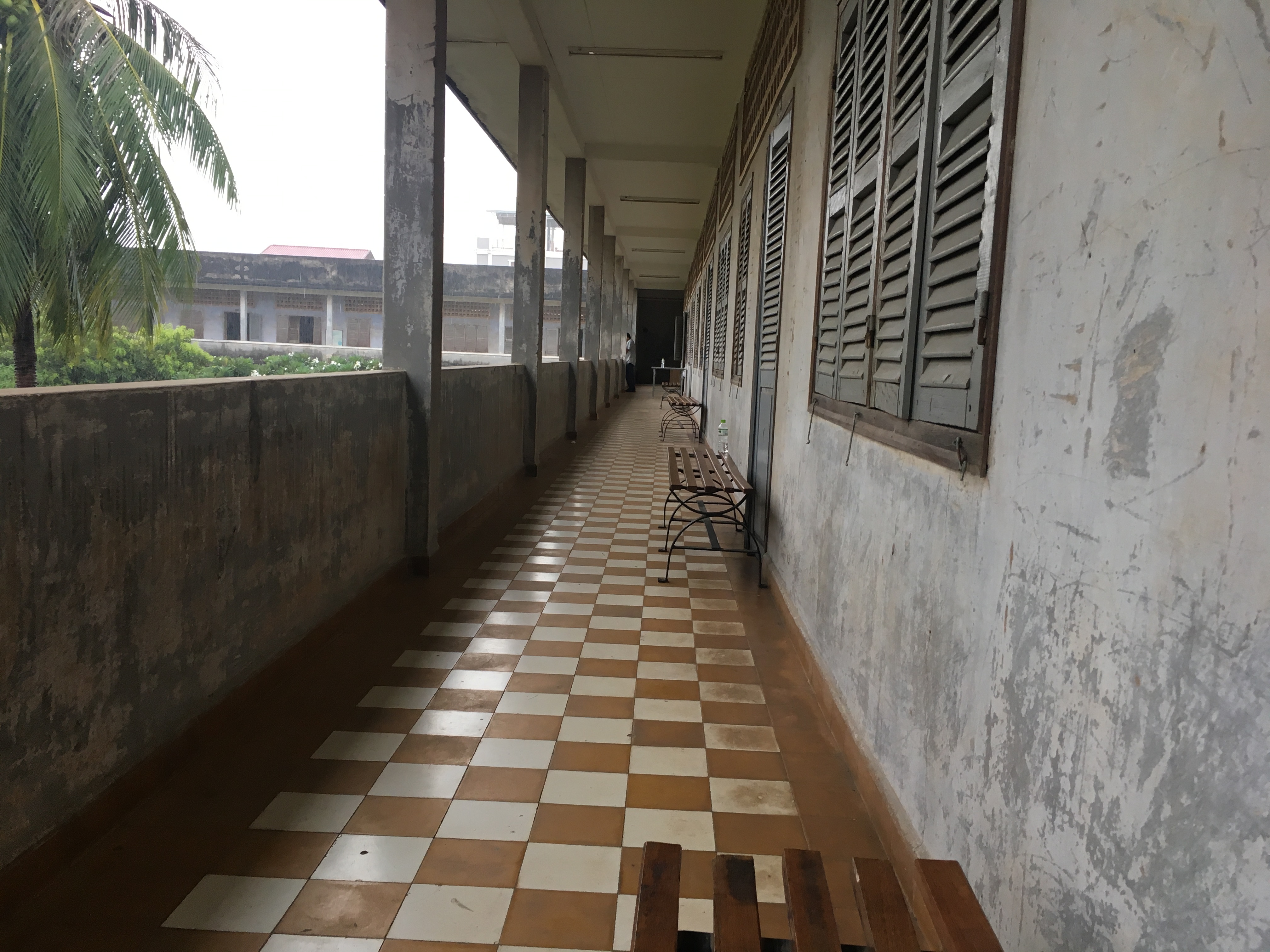
The Cambodian killing fields
On the next day, we visited the Choeng Ek Genocidal Centre (one of the Cambodian killing fields). People were sent here from the S-21 prison to be executed – they were not shot as bullets were too expensive, but instead prisoners were often hacked, stabbed or beaten to death. It was part of the regime policy to kill entire families to avoid relatives seeking revenge on behalf of their families which meant that even innocent women and children were executed. The regime also displayed signs of paranoia – killing some of its own soldiers who were believed to have turned against Angkar.
Visiting the killing fields was another sobering experience that made me really reflect on how lucky and privileged I am. I’ve been born and raised in the UK, never lived through war or poverty and benefited from an amazing and uninterrupted education, unlike many of the Cambodians who lived and died during this horrible time. I pray that Cambodia’s future is bright and not plagued by its past, and that the whole world takes notice of its history to ensure that such atrocities are not repeated elsewhere.
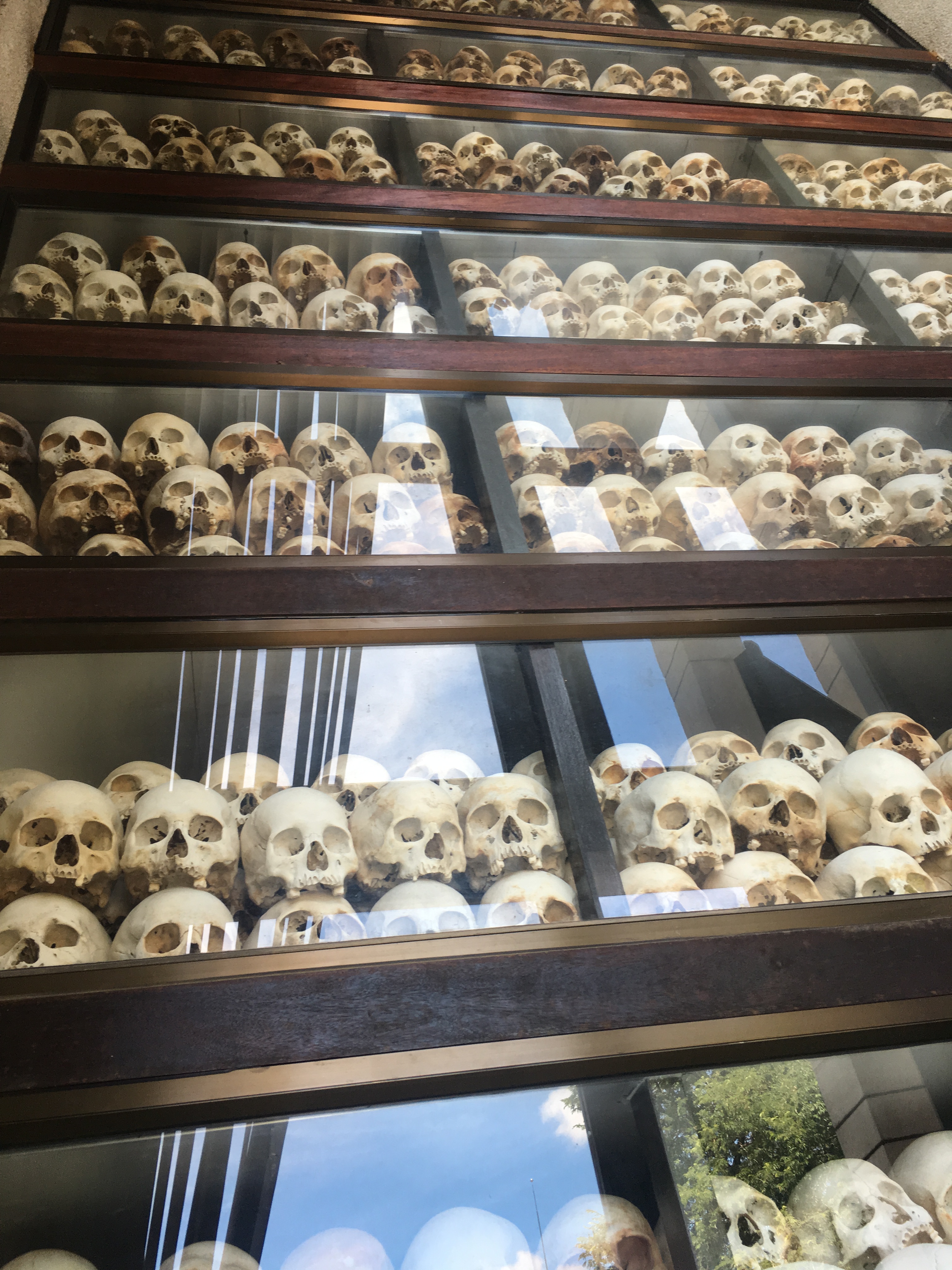
Kampot
After such a tough emotional experience, we had a fairly light-hearted afternoon. We chilled and ate until our bus to Kampot. The following day, as we only had a few hours in Kampot until our bus to Siem Reap, we rented a tuk tuk to take us to the sights nearby. Our first stop was the Secret Lake – a beautiful spot but another site plagued by the Khmer Rouge. The lake was built by prisoners and villagers, many of which were killed after it was built and whose bodies were dumped in a ‘secret’ mass grave at the bottom.
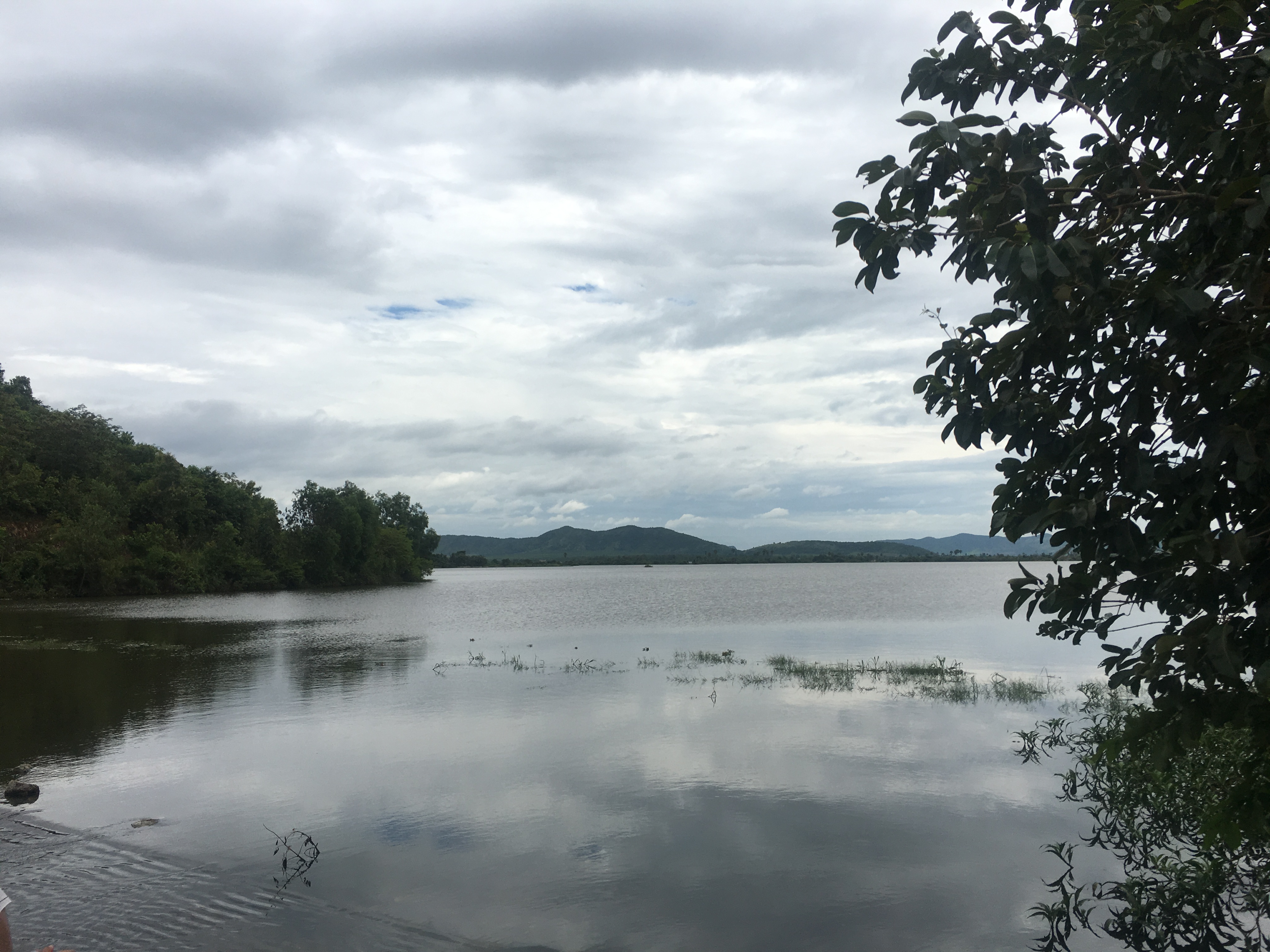
We then headed to the Pepper Plantations. Le Plantation is a family run pepper plantation with over 20 hectares of land. They produce and sell black pepper, red pepper, long pepper and turmeric. Their products are certified internationally and are organic and mainly hand processed – they use natural fertilisers and natural pesticides. When we arrived, we were showed a picture presentation introducing us to the different pepper plants they have and how they grow the pepper. We then tasted the different pepper products.
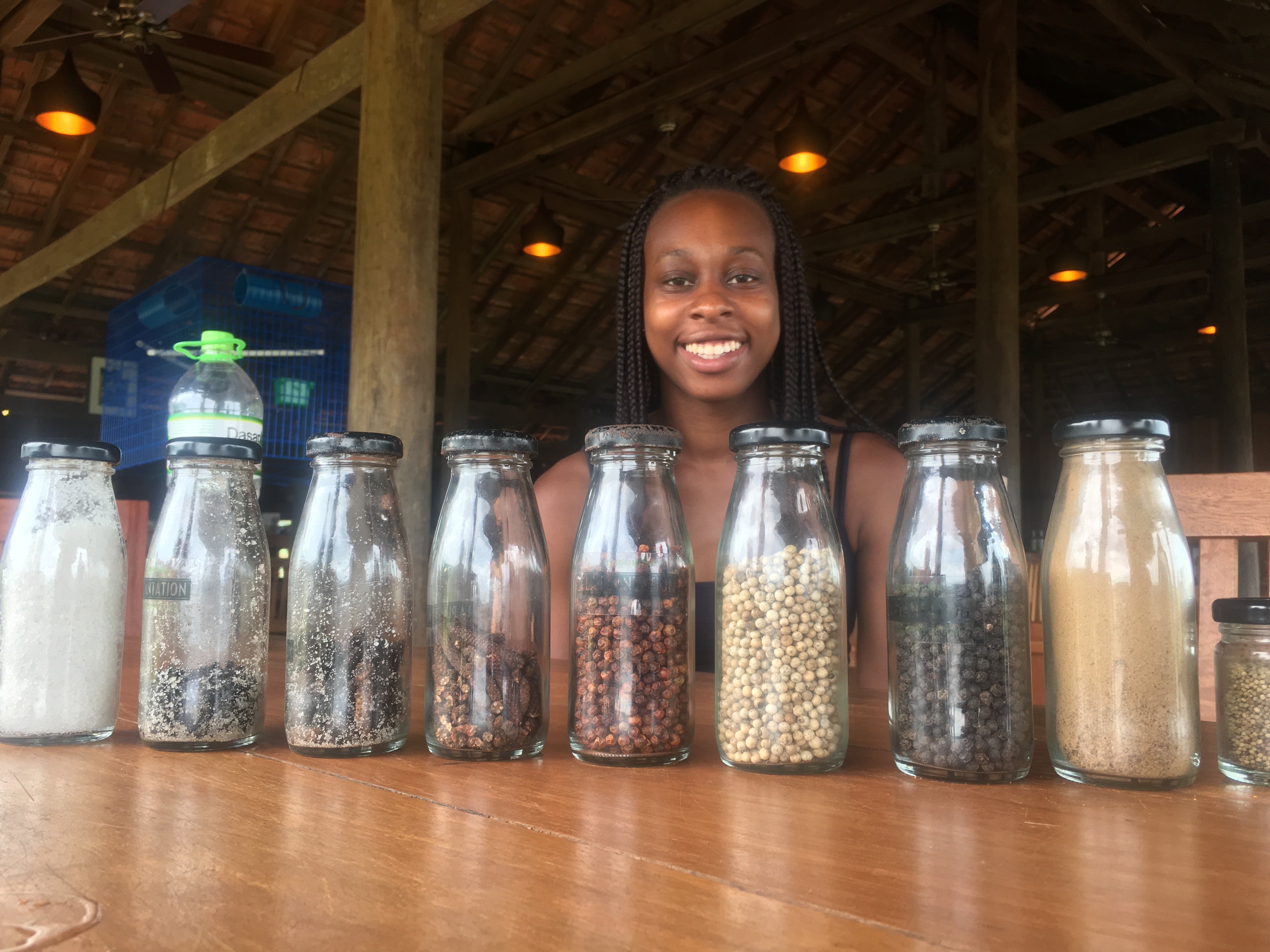
We were also taken on a brief tour around the grounds. This was a cool experience especially since I’ve never known anything about how pepper is grown.
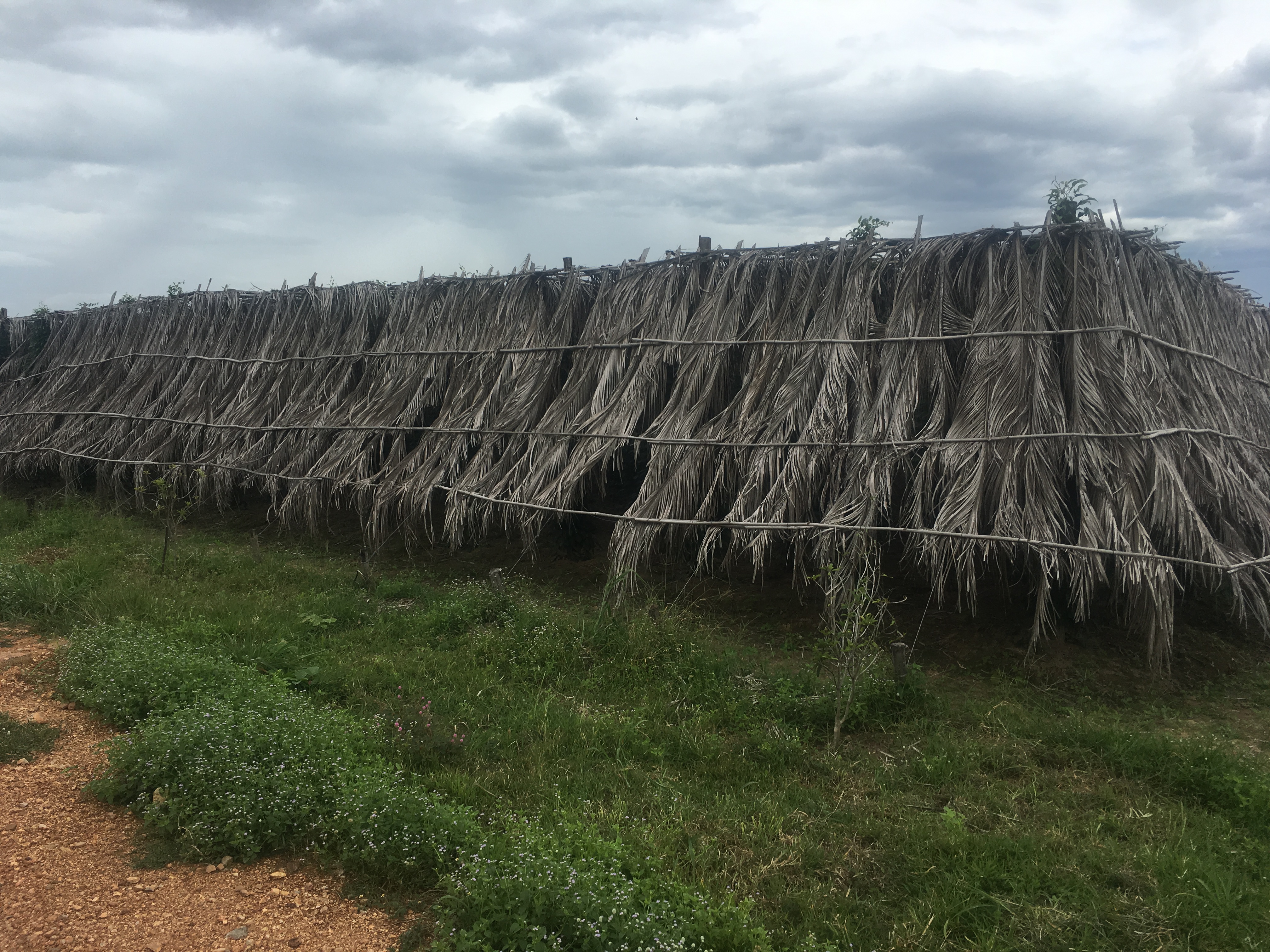
Our driver dropped us off at the riverfront where we had lunch. We all tried Amok (a traditional Cambodian dish) before our night bus to Siem Reap, which was surprisingly good, despite what other people had said about Cambodian food.
Siem Reap
We spent our first day in Siem Reap walking around the town. First stop was Pub Street where we all ate some delicious Khmer chicken curry.
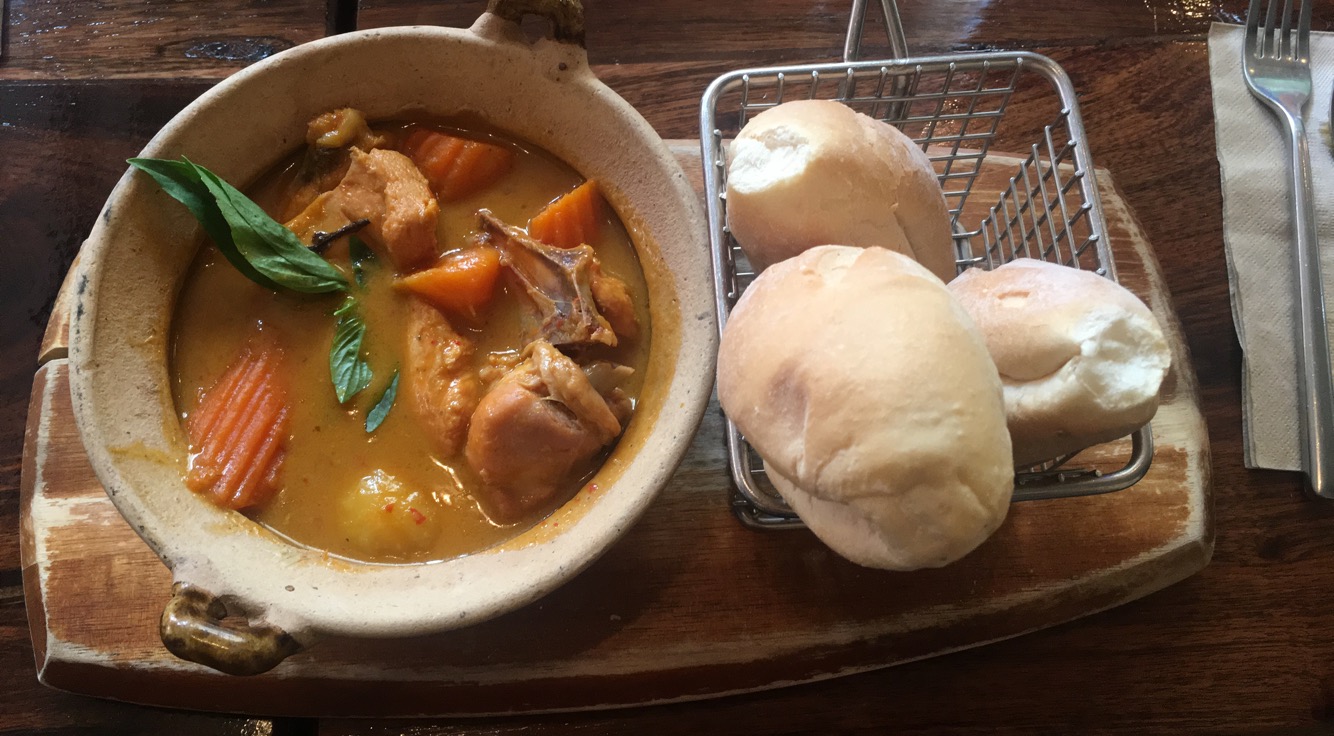
After lunch, we walked around the old market and across to the night market across the river. We had an early night in preparation for our sunrise temple tour the following day.
Angkor Wat
For this, we woke up at 4am, and met out tuk tuk driver. He drove us to the ticket office, which was actually so far from the actual temple site. We bought our 1 day passes which were $37 and then drove to the site. We arrived outside Angkor Wat to watch the sunrise over the West Gate. It was so beautiful and so peaceful – the photos just don’t do it justice.
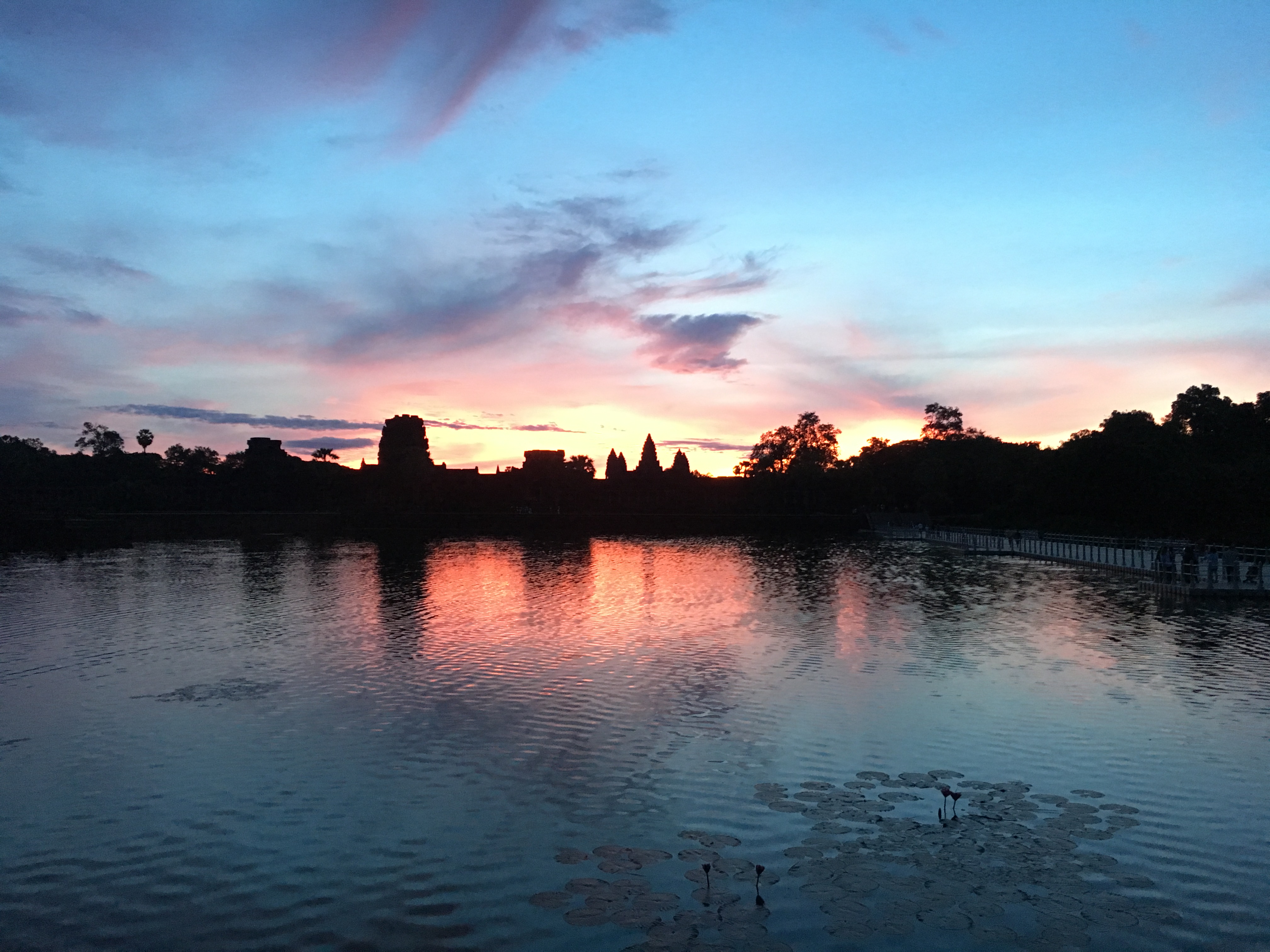
After the sun had risen, we walked into the grounds and looked around the temple.
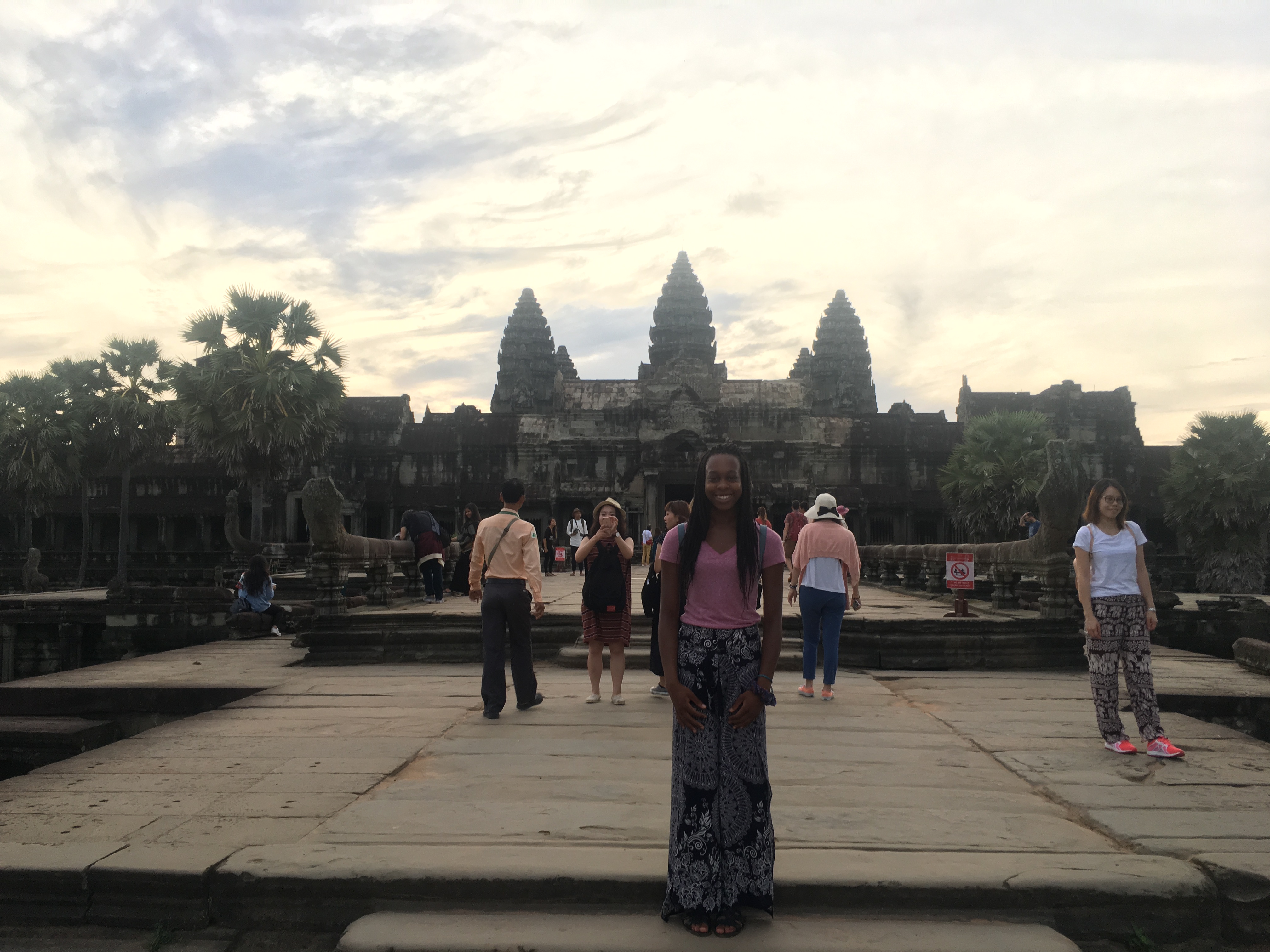
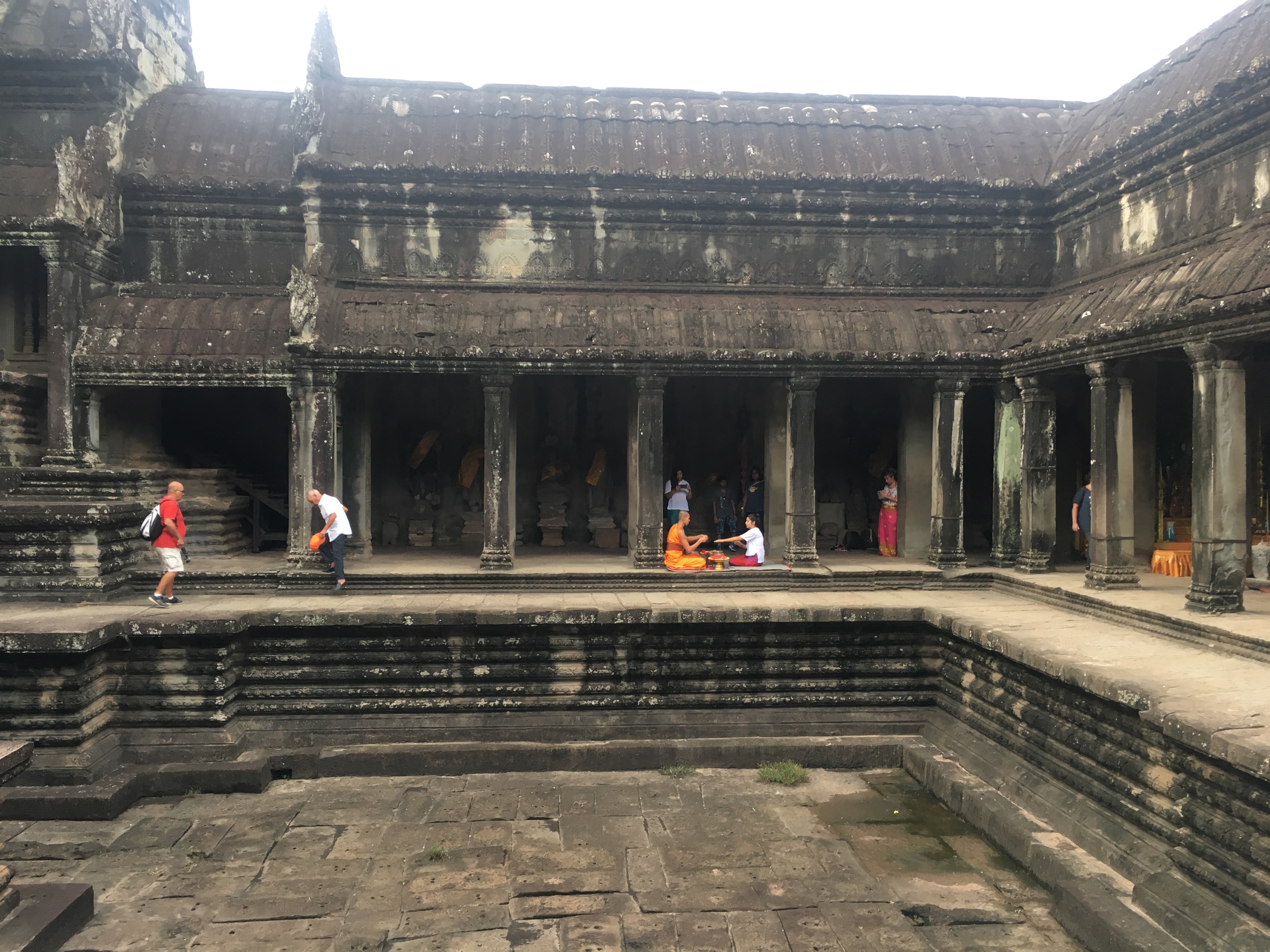
Other temples
We also queued to walk up the highest tower, Bakan, at about 7ish. The views were amazing and it was so crazy to think about how the temple was actually built such a long time in the 12th century. We did discuss a bit in the queue how there are obviously so many treasures from the ancient world, but what would be left from our current age. My opinion was that we value different things nowadays and not to the same extent as past generations. I don’t think we value anything or necessarily have the skills to build such great and majestic monuments. Who knows how long the skyscrapers of the 21st century will last but I do know that these skyscrapers don’t really mark anything of real but only commercial value.
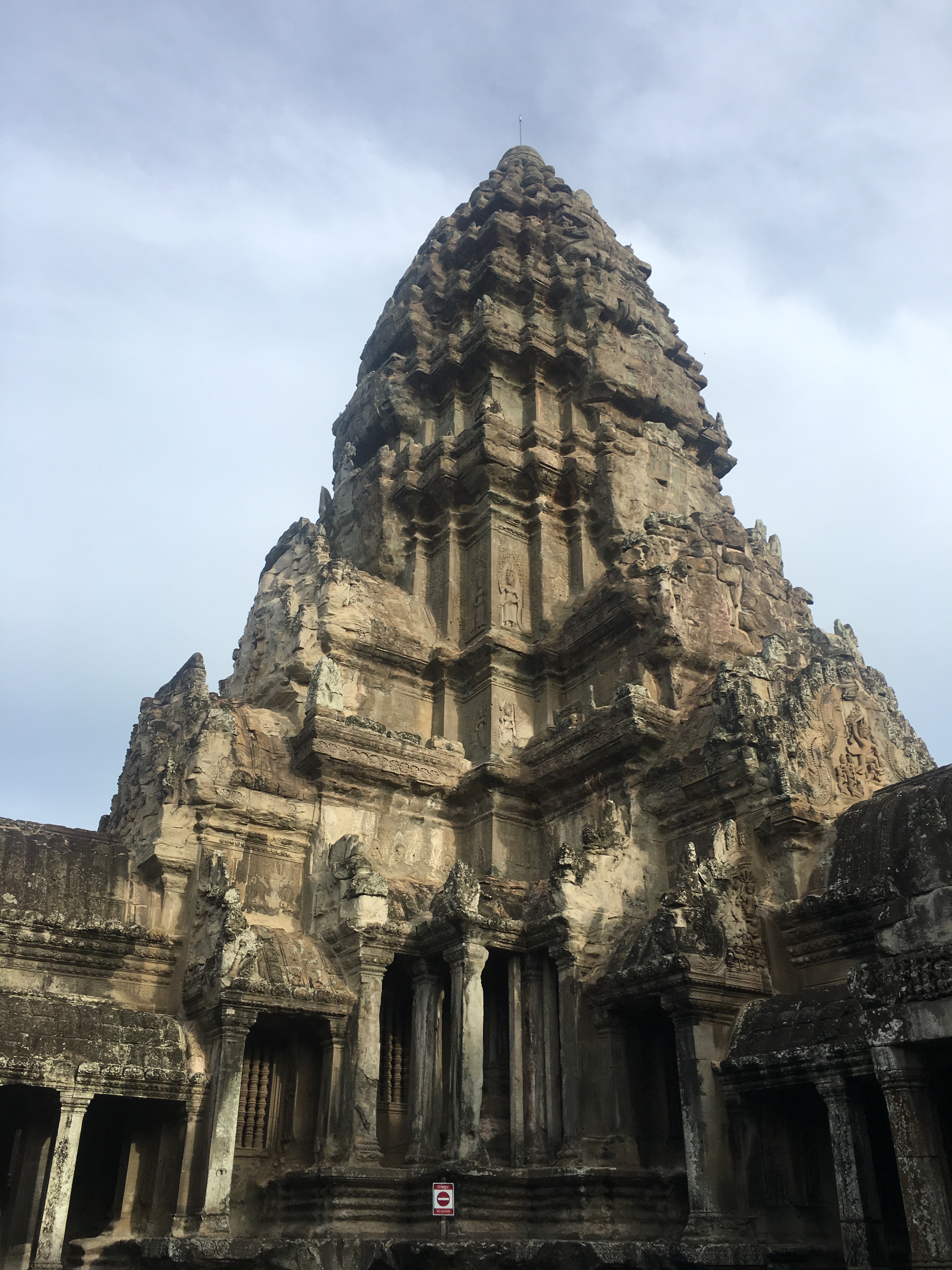
The next three temples were small in comparison – Prasat Kraven, Sras Srang and Banteay Kdei.
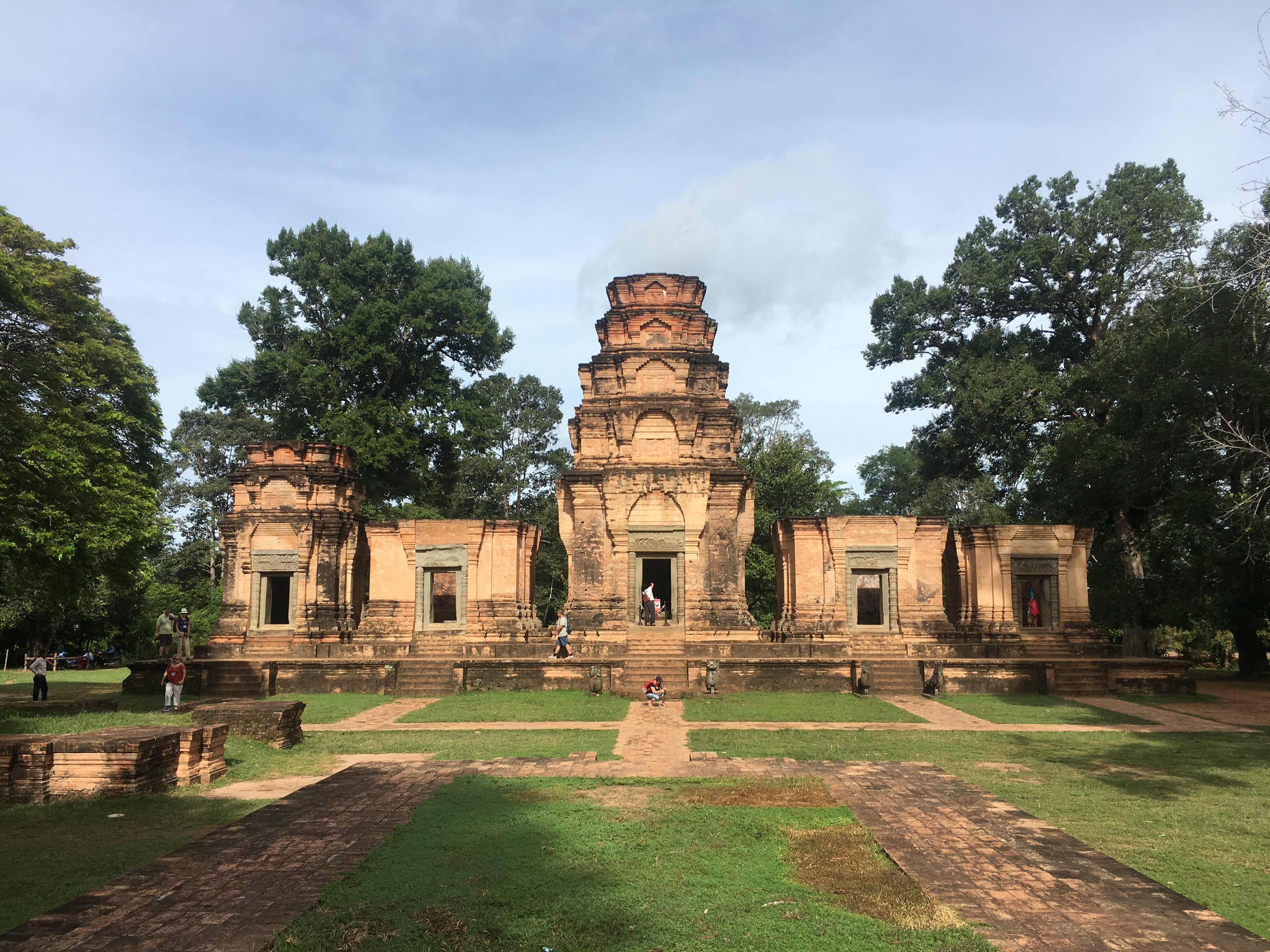
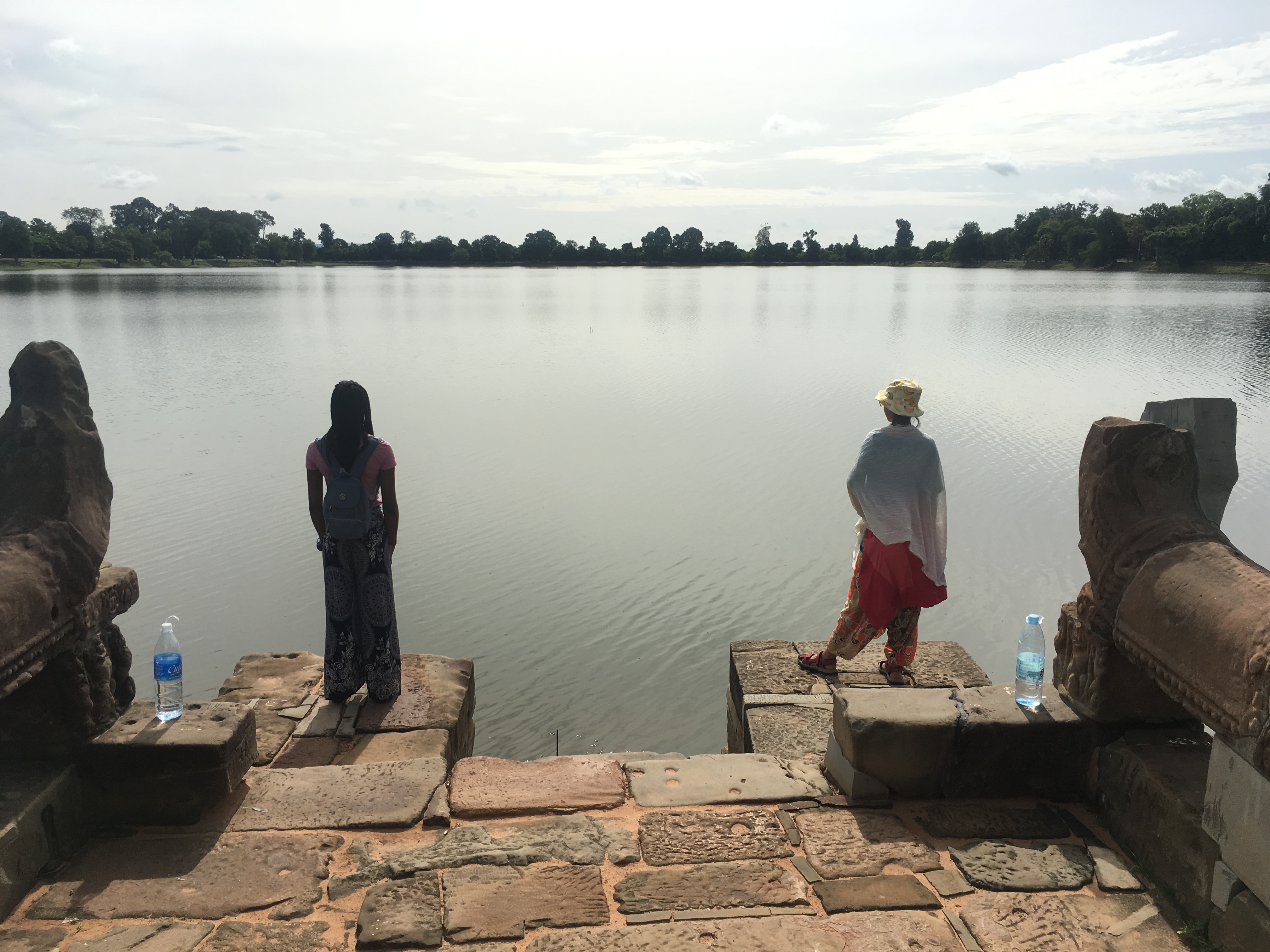
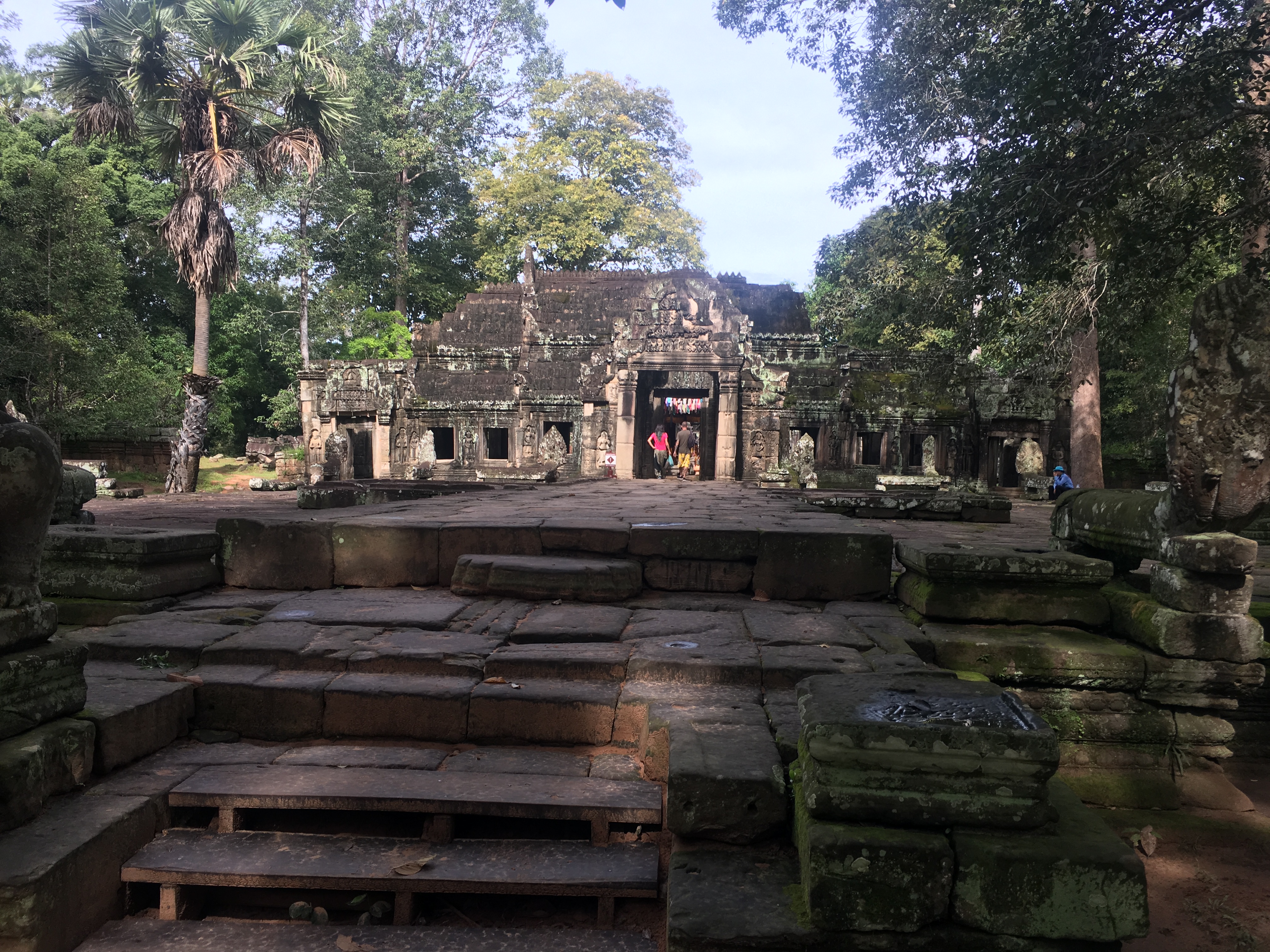
The next temple was Ta Prohm – made famous by Lara Croft Tomb Raider. This was by far my favourite temple as the ruins were really cool, kind of shaped like an intricate fortress or maze.
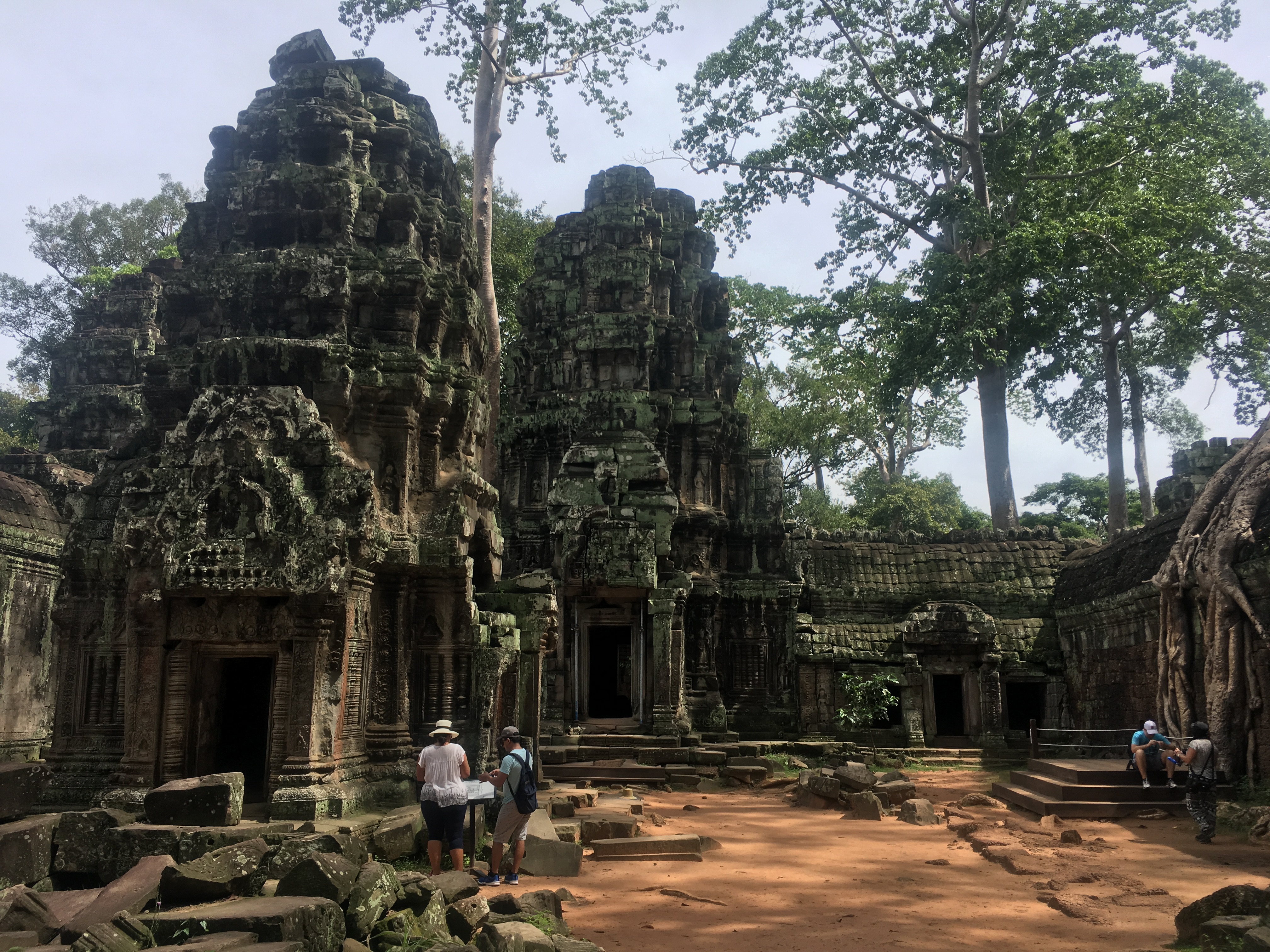
After seeing some more small temples, our last temple was Bayon. This was pretty cool too – it consisted of like these round column turrets with Buddhas on each of them.
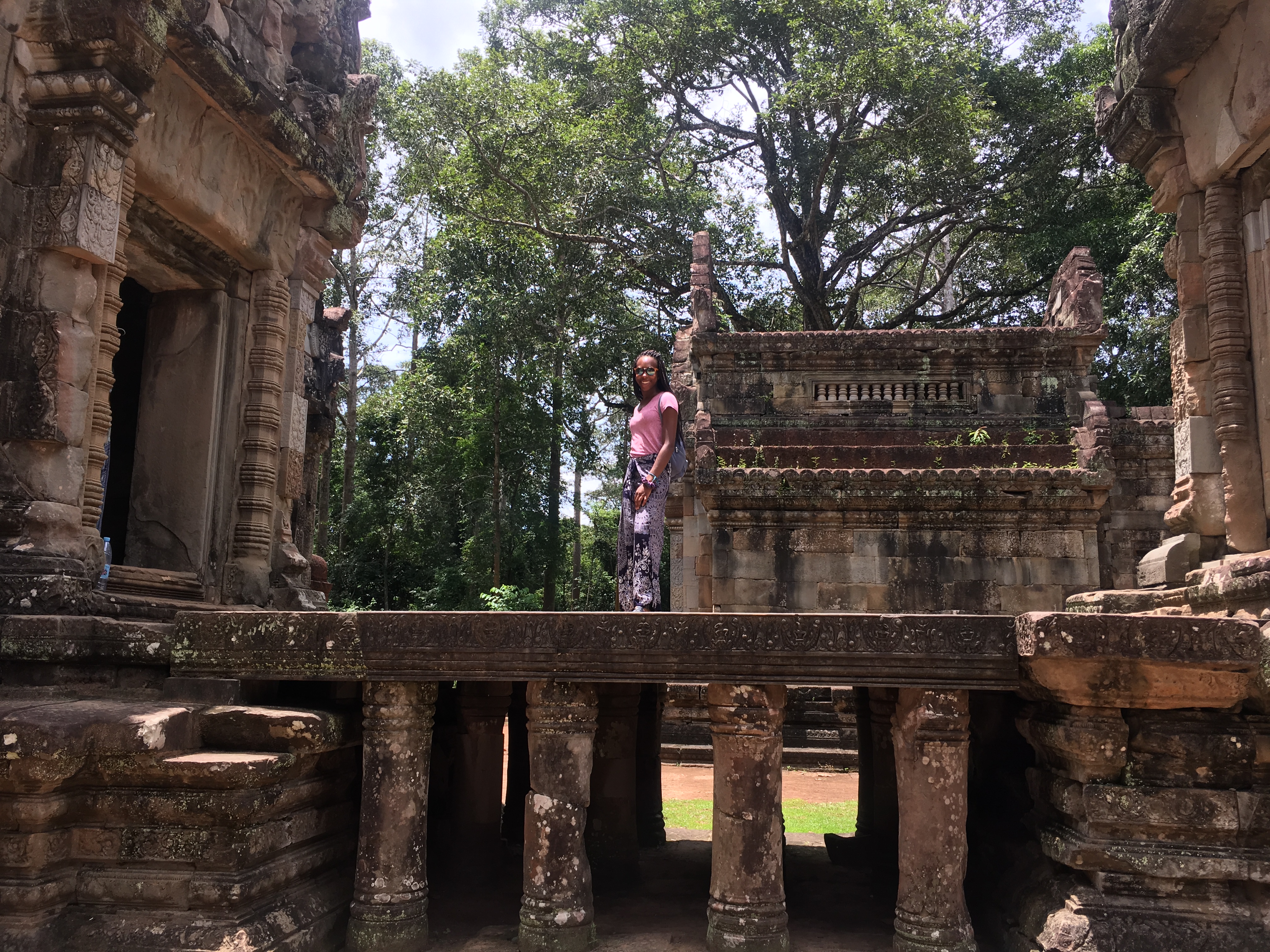
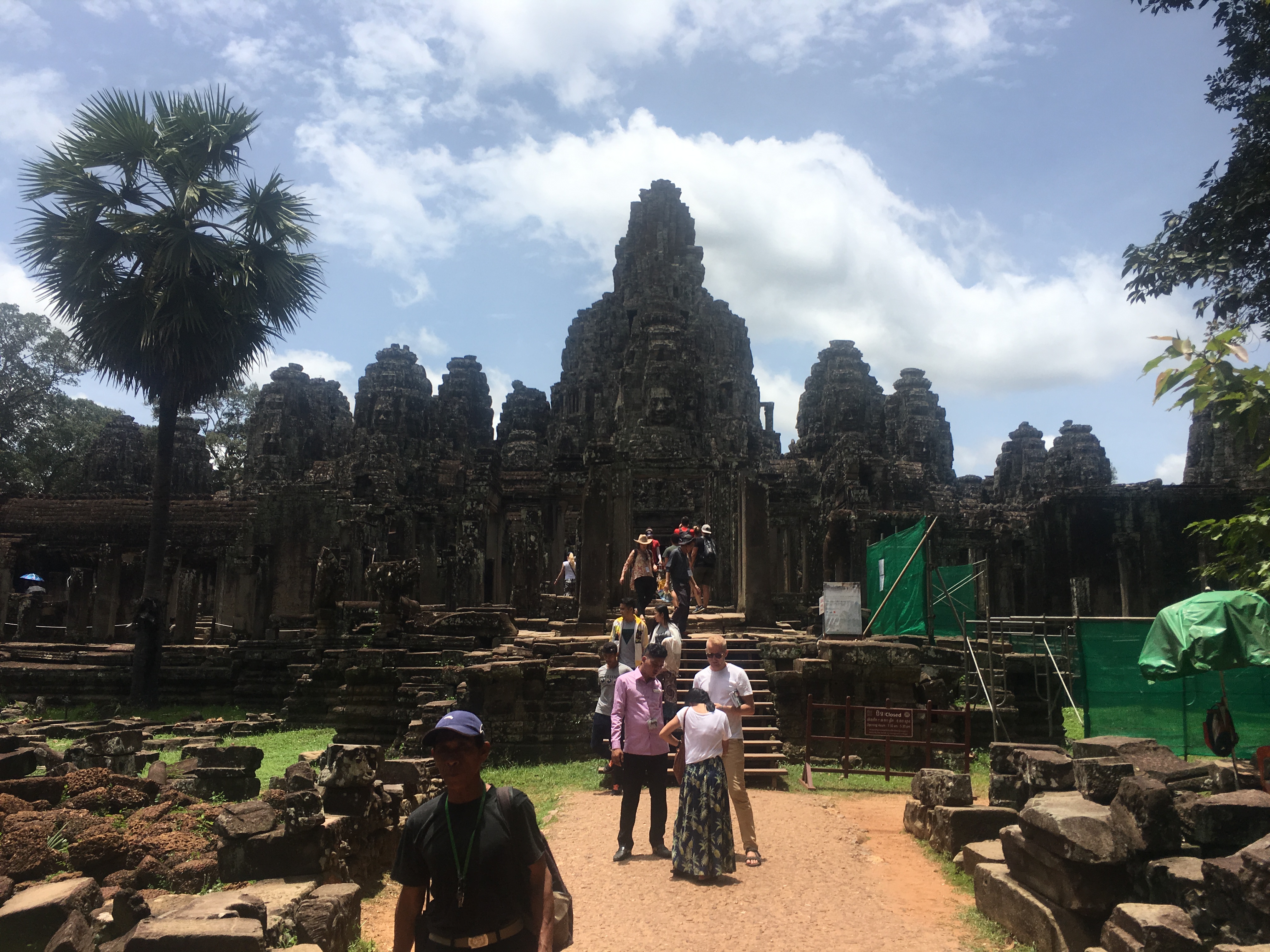
We were meant to walk around Angkor Thom, but by this time we were all so tired from walking around (13km and counting) and we all felt that we had got the general gist of the temples and ruins.
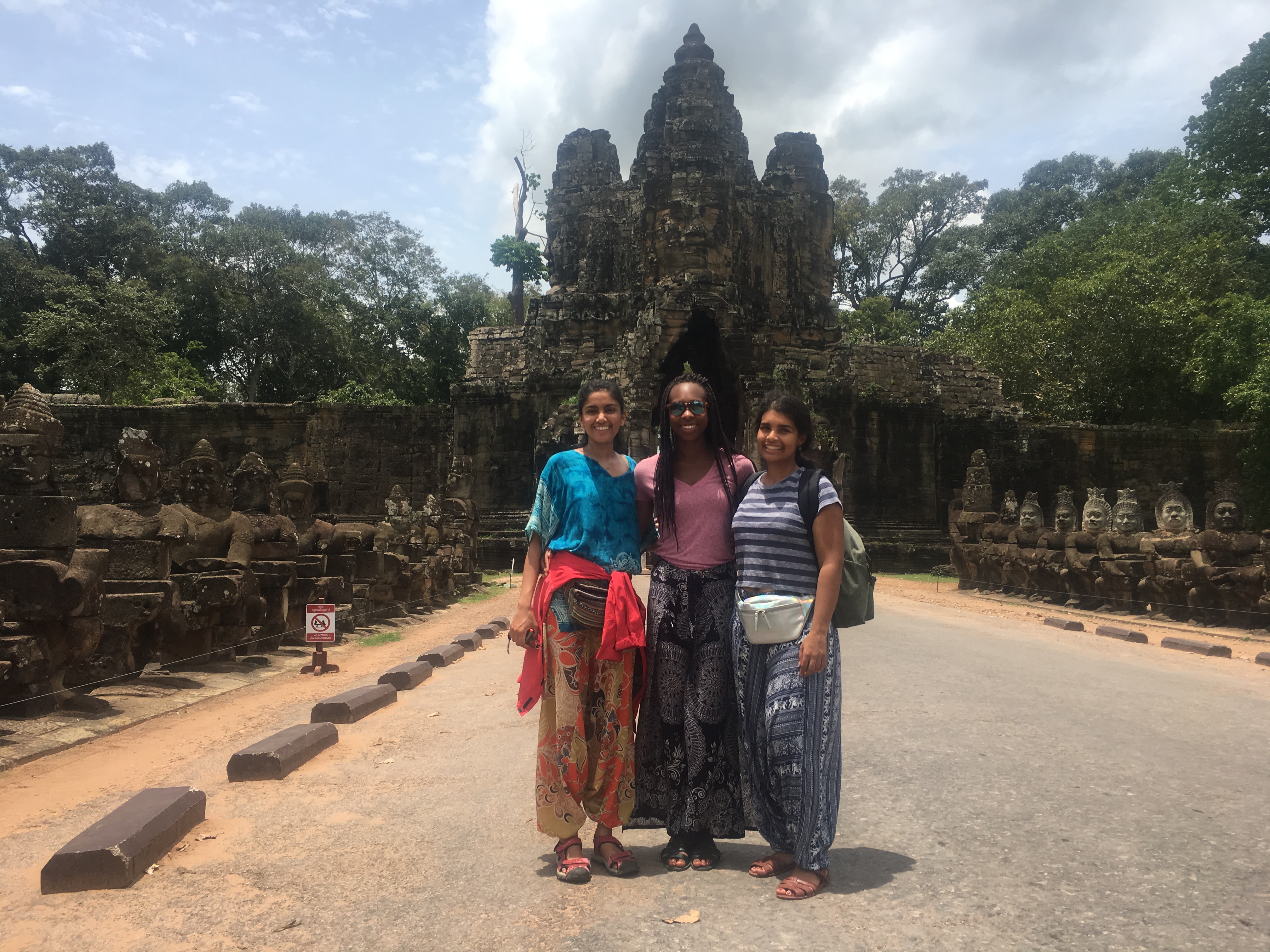
Food, glorious food
After returning to our hostel, Tasha napped (standard), whilst Neha and I went for lunch. When we came back, Tasha and I planned our stay in Thailand – deciding on Koh Lanta as our preferred island destination, whilst Neha planned to travel north to meet our flatmates. For dinner, we went back to Pub Street, this time opting to eat in Khmer Family Restaurant. I had prawns in a garlic tomato sauce with garlic bread and an iced pineapple mango tea – I’m running out of adjectives to describe the food that I’ve eaten in SE Asia so I’m just going to say that it was really really really good.
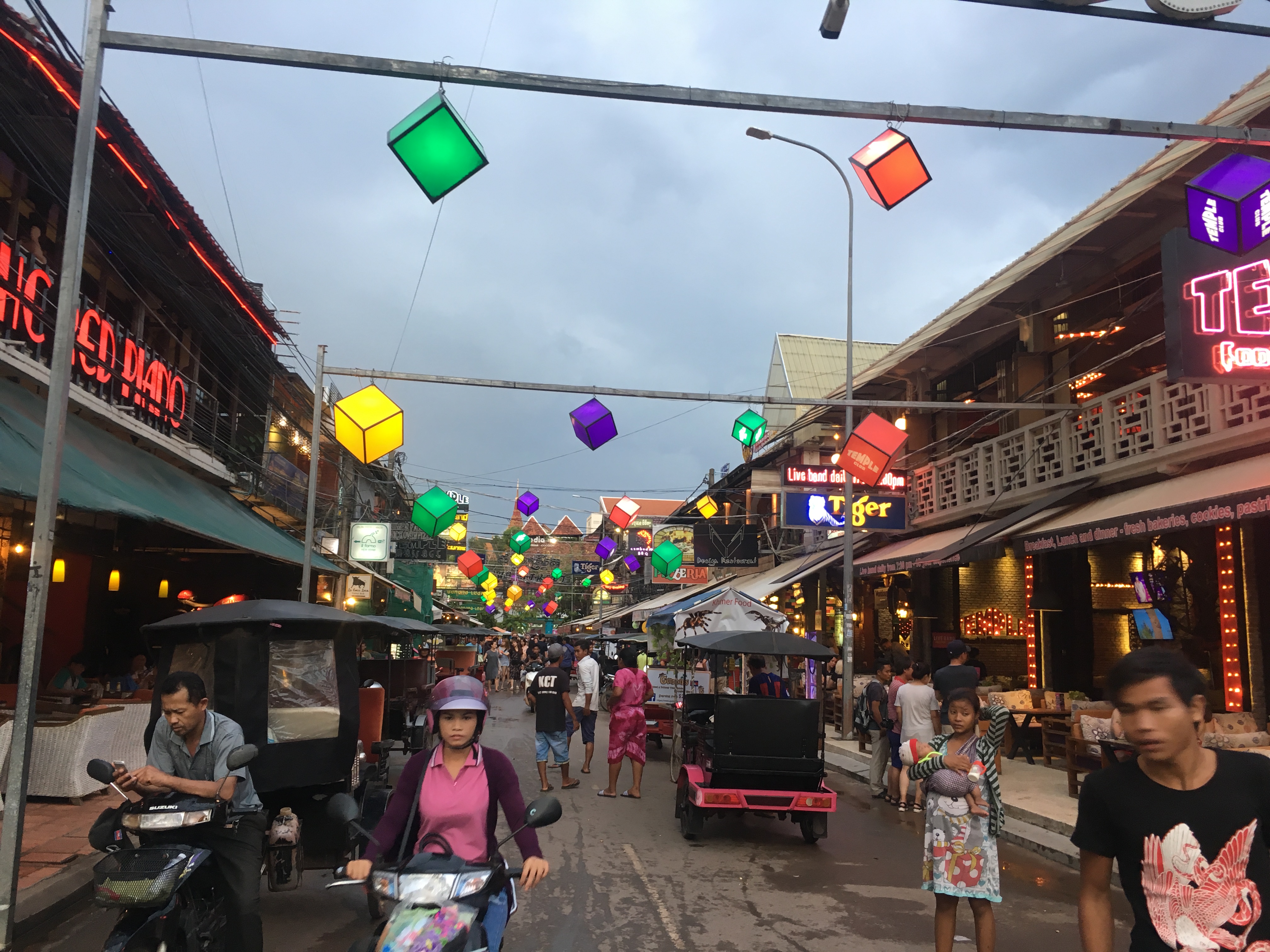
After dinner we got $1 foot massages – mine was great whilst Neha’s looked very painful with her masseuse constantly hitting her legs with his fists.
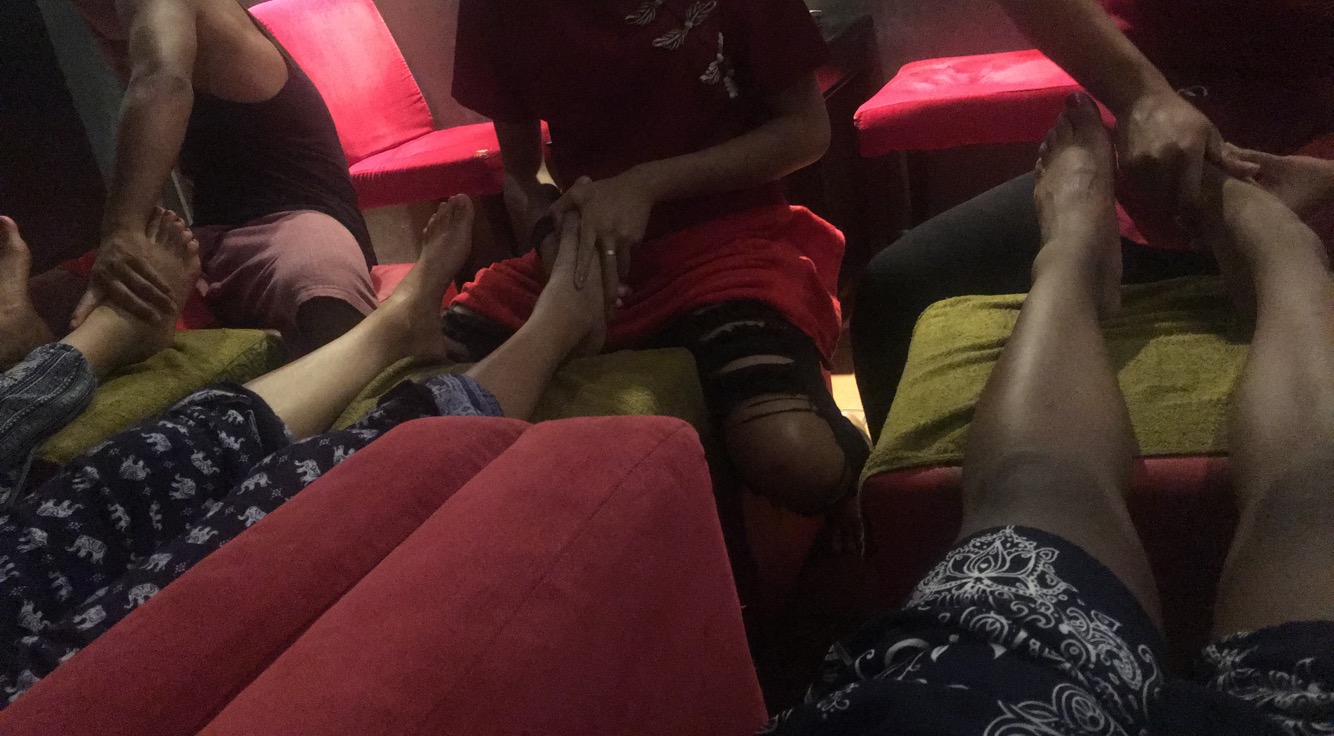
The following day we got a bus to Thailand via the Po Pet border, getting excited for our island getaway.
Up Next: Koh Lanta
